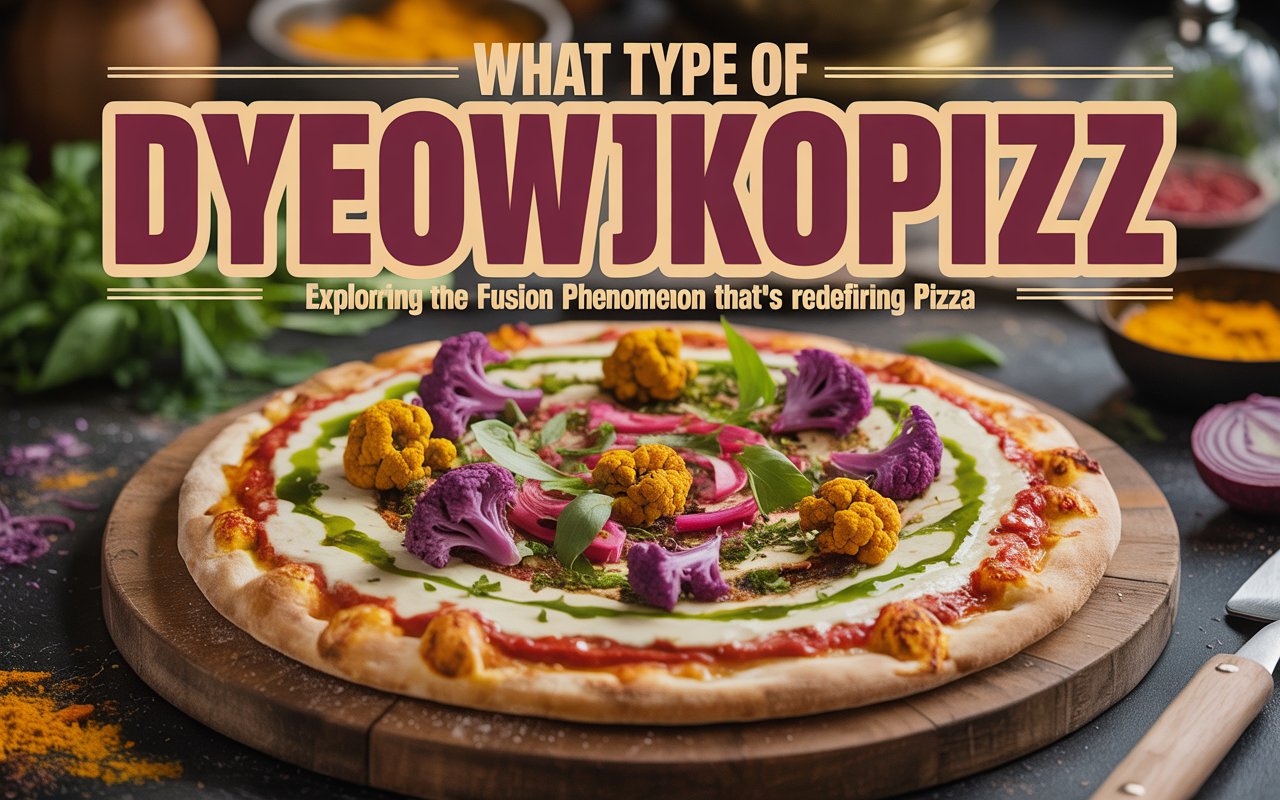
The Birth of a Culinary Icon
The origin of dyeowokopizz can be traced back to specific regions where culinary traditions flourished. It is believed that this distinctive dish emerged amidst the rich tapestry of cultural influences, particularly in areas characterized by vibrant agricultural practices and communal dining customs. The early iterations of dyeowokopizz were primarily crafted from locally sourced ingredients, which were essential in defining its unique flavors. Staple components such as an array of grains, vegetables, and artisanal cheeses played a pivotal role in forming the foundation of this iconic dish.
Traditional preparation methods also significantly contributed to the emergence of dyeowokopizz as a beloved option in local eateries. Communities often gathered to share meals, fostering a spirit of collaboration that enabled the refinement of cooking techniques passed down through generations. As people experimented with different ingredient combinations and preparation styles, the dish evolved, allowing it to adapt and perfectly suit regional tastes.
In its early days, dyeowokopizz reflected the culinary influences of its origin, often showcasing distinct regional spices and herbs. Over time, it transcended its humble beginnings, becoming a cherished delicacy beyond its local confines. This transition marked the expansion of dyeowokopizz across various cultural landscapes, where it was embraced and modified to reflect diverse palates while maintaining the essence of its original formulation. Each rendition of the dish, although somewhat different, honored the influence of its historical roots, ensuring that the origin of dyeowokopizz remained a vital aspect of its identity. As culinary boundaries blurred, dyeowokopizz garnered appreciation from food enthusiasts worldwide, embedding itself into global gastronomy.
Cultural Influences and Evolution
The fascinating origin of dyeowokopizz is deeply entrenched in a multitude of cultural influences that have contributed to its evolution over the years. Various factors, including migration, trade, and cultural exchanges, have played pivotal roles in shaping this dish. As communities moved and interacted with one another, they shared not only their ideas but also their culinary traditions. This interaction resulted in the introduction of new ingredients and techniques that enriched the traditional preparation of dyeowokopizz.
For instance, trade routes established between different regions allowed for the exchange of spices and vegetables that were previously unavailable. This introduction of novel flavors prompted chefs to experiment, resulting in diverse regional variations of dyeowokopizz. As the dish spread, each locality adapted it to reflect their preferences, creating unique versions that often incorporated indigenous ingredients and cooking methods. Such adaptations illustrate the dynamic nature of dyeowokopizz, as it absorbed influences from cultures that encountered the dish.
Moreover, changing tastes and dietary preferences over the years have also led to significant shifts in the way dyeowokopizz is prepared and enjoyed. For example, the increasing awareness around health and nutrition has prompted many cooks to incorporate lighter ingredients or alternative preparation methods. These modifications do not only cater to modern tastes but also highlight the dish’s capacity to evolve while retaining its fundamental essence. As a result, dyeowokopizz continues to delight diners worldwide, showcasing a rich tapestry of cultural heritage through its iterative adaptations.

The Journey to Modern-Day Dyeowokopizz
The evolution of dyeowokopizz from its traditional roots to a staple in contemporary cuisine is a testament to the resilience and adaptability of culinary practices. Initially a localized dish, dyeowokopizz has transformed into a globally recognized food item that celebrates both heritage and innovation. This journey is characterized by a revival of traditional recipes, which have seen a resurgence in popularity as people seek authenticity in their food experiences. Chefs and home cooks alike are revisiting age-old methods and ingredients, ensuring that the original essence of dyeowokopizz is preserved while making it suitable for today’s palates.
Furthermore, the influence of gourmet chefs cannot be overlooked. Renowned culinary figures have embraced dyeowokopizz, experimenting with its flavors, textures, and presentations. This has led to a reimagining of the dish, infusing it with more diverse ingredients and contemporary techniques. As these chefs introduce refined versions of dyeowokopizz in upscale dining settings, they elevate its status and desirability, attracting a broader audience and encouraging eateries to feature it on their menus.
Another significant factor contributing to the popularity of dyeowokopizz is the rise of fusion cuisine. Chefs are combining elements from various culinary traditions to create unique adaptations of the dish, which has resulted in innovative variations that appeal to adventurous eaters. This creative approach not only widens the scope of dyeowokopizz but also fosters a dialogue between cultural influences in the culinary world.
Social media plays a crucial role in the ongoing popularity of dyeowokopizz. Platforms such as Instagram and TikTok have enabled food enthusiasts to showcase their culinary creations, allowing the dish to reach a global audience. By sharing recipes, photos, and cooking techniques, individuals amplify the visibility of dyeowokopizz, encouraging more people to enjoy it in their own homes. The intersection of tradition and modernity greatly enhances the relevance of dyeowokopizz in today’s food landscape.
Celebrating Dyeowokopizz: Recipes and Serving Traditions
Dyeowokopizz, a dish steeped in rich cultural history, continues to be a beloved culinary delight celebrated across various communities. The essence of dyeowokopizz can be captured through traditional recipes that have been passed down generations, reflecting its origins and evolution. One popular way to prepare dyeowokopizz involves marinating the key ingredients in a blend of local spices, which infuse the dish with depth and complexity. The marinated mixture is then layered over a base, such as freshly made dough or spiced rice, lending an authentic texture and flavor profile to the dish. Modern interpretations often include additional elements, such as grilled vegetables or an array of proteins, demonstrating dyeowokopizz’s versatility and ability to accommodate diverse dietary preferences.
Serving traditions associated with Origin of Dyeowokopizz also underline its communal essence. Traditionally, the dish is enjoyed during gatherings and celebrations, reinforcing social bonds among families and communities. A popular practice is for diners to share a large communal platter of dyeowokopizz, evoking a sense of togetherness and encouraging interaction. This communal approach not only highlights the dish as a focal point of the meal but also serves as a reminder of its historical significance as a symbol of hospitality and community.
Various festivals around the world pay homage to dyeowokopizz, celebrating its rich heritage through events that showcase its preparation and serving. During these festivals, locals often participate in friendly cooking competitions, where they showcase their unique twists on the traditional recipe, stimulating creativity and cultural exchange. Such events foster pride in culinary heritage and demonstrate the ongoing relevance of dyeowokopizz in contemporary society.
As we explore the happy confluence of traditional recipes and modern innovations, it is clear that dyeowokopizz remains more than just a dish; it is a cherished tradition that continues to unite people across cultures and generations.


